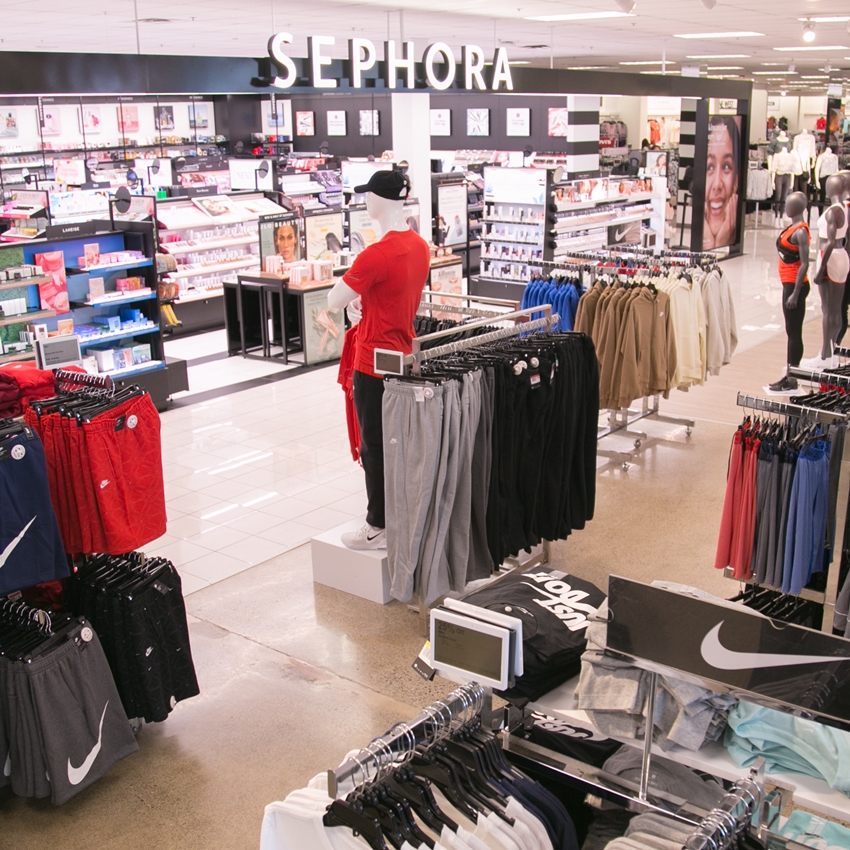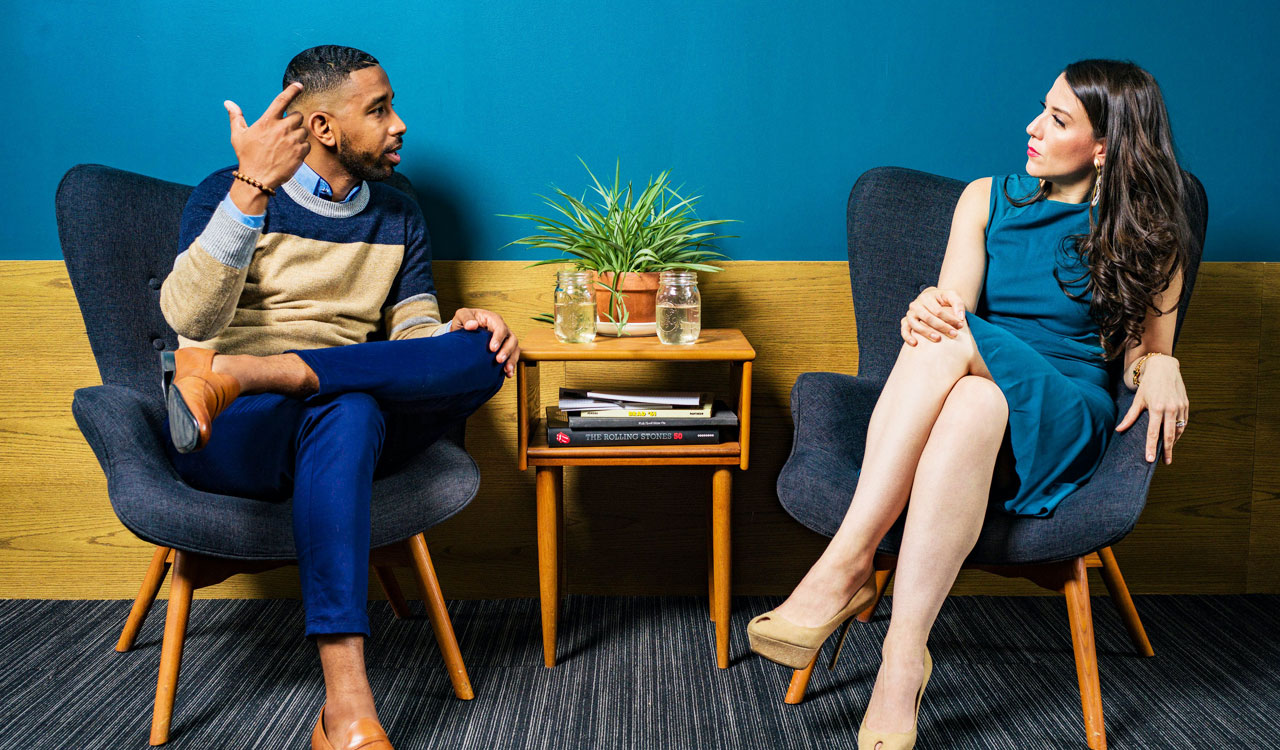The groundbreaking Sephora and JC Penney collaboration has ended. And then just as quickly, Kohl’s tripled down on their in-store Sephoras, with plans to expand from 200 to 600 stores by the end of 2022 with an additional 250 stores in 2023. This will bring the total number of Kohl’s locations with in-store Sephoras up to a whopping 850 by the end of next year, eclipsing the number of Sephoras that were ever inside JC Penney, which peaked at around 650 stores in its heyday. An while we’re on that subject, Sephora stores in JCP looked like they were dropped in from another planet, completely unrelated to the environment they shared. Apparently, customers noticed: Sephora did about $600 per square foot in JCP while the rest of the footage did around $150 to $200. In other words, the collab paid off big for Sephora, but JCP did not get any crossover business.
The Kohl’s collaboration raises a few important questions about Sephora’s branding strategy, as well as its core customer demographic. It’s an interesting decision that Sephora has partnered with retailers like JC Penney and the Midwest-based Kohl’s. These are retailers have slim to no glamour and cater to middle class families.
Cosmetics retailers are expected to be – and remain – groundbreaking. That feeling of entering a physical store and being exposed to the latest cosmetics trends is still sought after by consumers of all ages.
The question becomes: Is Sephora making the mistake of going down market, like so many upscale retailers that have come before?
The Midwest is not a Trendsetting Beauty Market
It’s not surprising that Sephora execs are focused on expanding the company’s physical footprint through retail partnerships. An impressive 85 percent of skincare and cosmetic sales still happen in physical stores. While the mid-tier department stores Sephora has partnered with are certainly accessible, the demand for prestige cosmetics may be elusive.
How many upscale mall and online customers will continue to be loyal Sephora ‘s legacy with their most pressing beauty needs when the customer base shifts to Midwestern moms and grandmas as the bulk of their business? How will they correlate the sophisticated Sephora brand image to a more modest milieu? And how will a new audience influence Sephora’s product development and brand-name offerings?
I spent the first 20 years of my life in Neenah, Wisconsin –– the same home state as Kohl’s. While the retailer enjoys a glowing reputation for CSR, in the land of beer and cheese the people there will be the first to tell you that they aren’t vying for any beauty trendsetting accolades.
The high school in Euphoria wasn’t set in Milwaukee for a reason. Obviously, the gap in trend adoption has closed slightly as social media and influencers make cosmetic trends more accessible to the masses. However, there’s still the widespread, unspoken mindset of needing permission to try out trends that haven’t yet hit the Midwestern mainstream. It’s questionable whether Sephora will be able to retain the glamour element, which is essential to upscale cosmetic sales, when many members of its core customer base are late adopters.
Going Down Market Should Be a Real Concern
Evaluating the hiring process for in-store Sephoras should have been essential in assessing whether Sephora at Kohl’s would be a strategic partnership for both parties. My biggest concern is whether the talent hired to work at in-store Sephoras will create an elevated Sephora shopping experience for Kohl’s customers, or if it will just take all of the magic out of buying prestige cosmetics –– sending the Sephora brand downstream. After all, the Sephora brand is built on a high level of sophistication and cool factor, and high cool-factor beauty consultants fulfill the brand promise.
Skilled labor is an important draw to in-store cosmetics sales. At their best, cosmetic stores such as Sephora, Ulta, even cosmetics/skincare sections of department stores, are staffed with skilled beauty advisors that have undergone substantial cosmetics training. Just for the record, there are two types of cosmetics training:
Brand Training
Product training that is done through individual brand partners. Urban Decay, for instance, may train associates on a specific eyeshadow palette or new release. Associates often receive said product for free, so it’s a job perk for those working in frontline cosmetics. This isn’t broad range training, but training that focuses on a specific product or product range. Training focuses on product ingredients, proven results, brand history, and application techniques.
Store Training
This is training that’s done by the retailer. This focuses on store rules, training associates on all of the lines carried in-store, and clienteling. This is broad range training done by Sephora for in-store associates.
The question is whether Sephora-in-Kohl’s associates still receive both brand/product training and Sephora training. Are the in-store beauty advisors trained by the brands Sephora carries, or are stores staffed with Kohl’s employees that are multitasking in different areas of the store? This is what will ultimately determine whether Kohl’s Sephoras will offer a customized in-store experience. Will associates be chock full of cosmetic and skincare expertise to share with customers, or will the cosmetics retailer simply melt into the generic, family-centric Kohl’s shopping experience? From a native Wisconsinite, I’m not confident that the cool factor of Sephora will translate.
Hope and Possibility
Cosmetics retailers are expected to be –– and remain –– groundbreaking. That feeling of entering a physical store and being exposed to the latest cosmetics trends is still sought after by consumers of all ages. Ensuring that customers perceive a brand as on the cusp of the latest fashions is essential to any cosmetic company’s ability to sell new shades and products. Yes, customers may still stop by Kohl’s to snag their Sephora products without going to the mall. But it won’t be long before positive perception of the company as a trendsetting force begins to wane… and next-gen customers begin to seek more progressive alternatives for their cosmetics needs.




